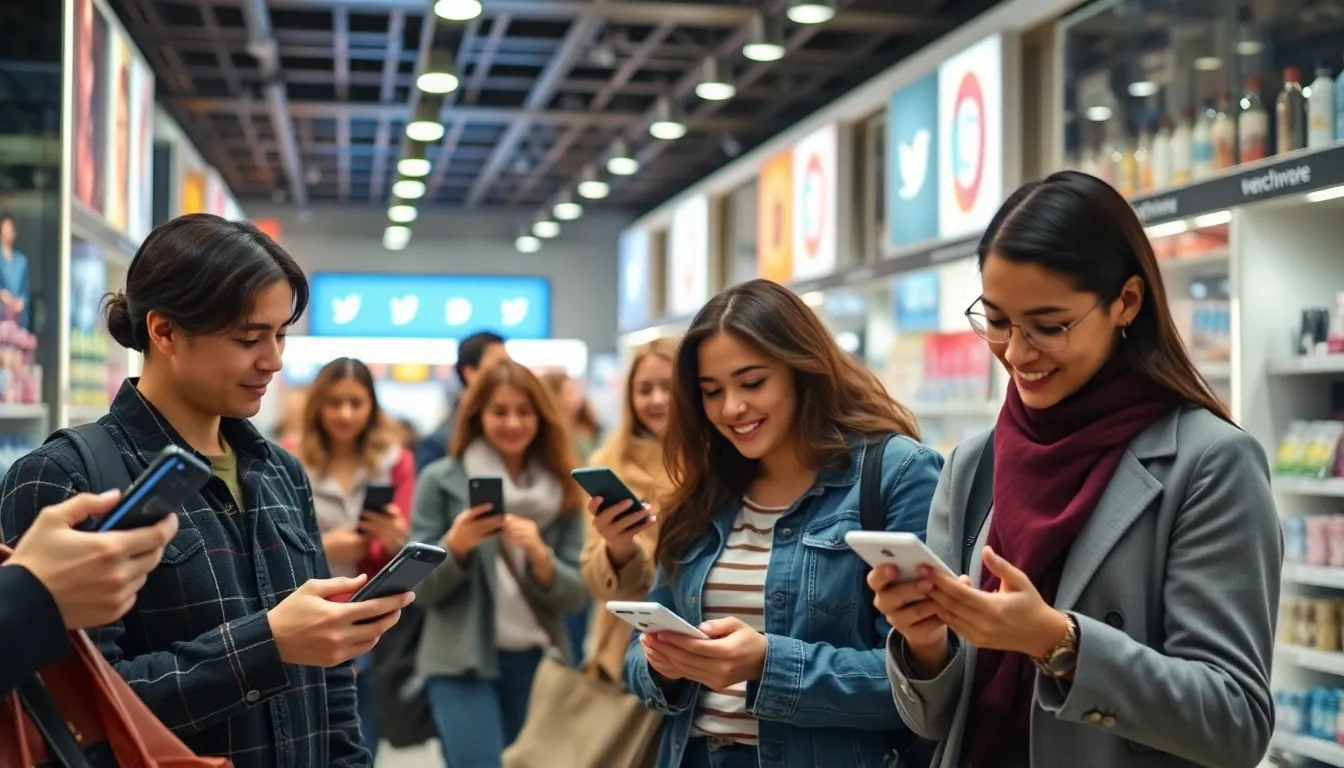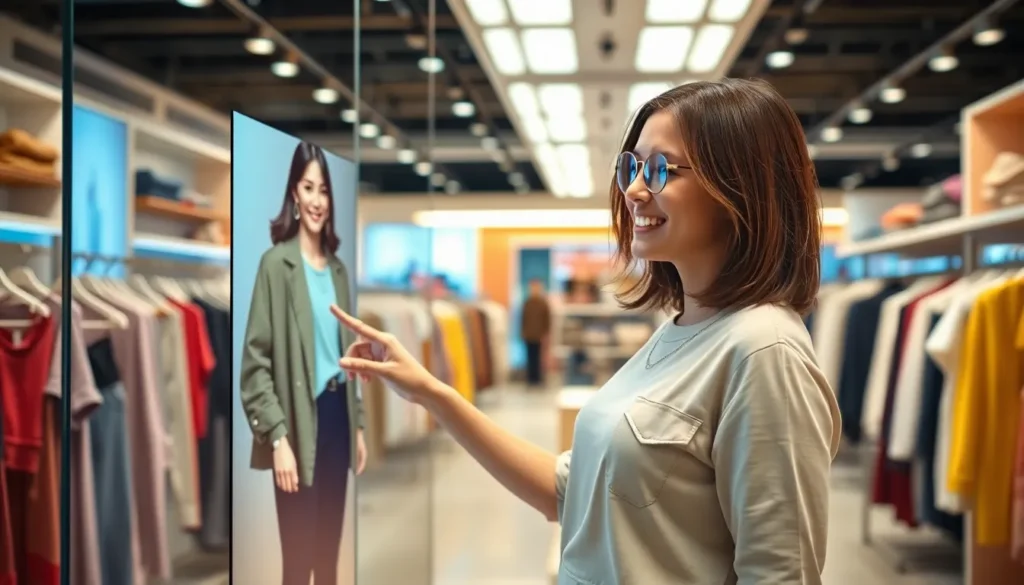Table of Contents
ToggleIn today’s fast-paced world, shopping technology is evolving at lightning speed. From augmented reality fitting rooms to AI-driven personalized recommendations, retailers are harnessing the latest innovations to enhance the shopping experience. These trends not only streamline the purchasing process but also create a more engaging environment for consumers.
As shoppers demand convenience and personalization, businesses must adapt to stay competitive. Understanding these emerging technologies is crucial for both consumers and retailers alike. By exploring the latest shopping technology trends, one can uncover how the retail landscape is transforming and what it means for the future of shopping.
Overview of Shopping Technology Trends
Shopping technology trends are transforming the retail sector at an unprecedented pace. Augmented reality (AR) fitting rooms enhance customer interactions by allowing users to virtually try on products from the comfort of their homes. Retailers reporting the integration of AR have noted increased customer engagement and higher conversion rates.
Artificial intelligence (AI) is another significant trend, powering personalized recommendations tailored to individual preferences. Retailers utilizing AI algorithms can analyze consumer behavior patterns, resulting in customized shopping experiences that lead to increased customer loyalty. Companies leveraging this technology report improvements in sales metrics, with one study showing a 20% increase in revenues through personalized shopping experiences.
Mobile payment solutions streamline the checkout process, offering convenience for consumers. Research indicates that 80% of shoppers use mobile wallets for transactions, reflecting a growing preference for cashless payment options. Retailers adopting these payment technologies often see shorter checkout times and enhanced customer satisfaction.
Moreover, social commerce is gaining traction, with platforms integrating shopping features directly into social media apps. A survey found that 54% of social media users have made purchases through these platforms, driving substantial traffic to e-commerce sites. Brands embracing social commerce strategies can tap into new consumer demographics and boost their online presence.
Data analytics allows retailers to gain deeper insights into inventory management and consumer trends. Retailers using data analytics can optimize stock levels and reduce waste, leading to improved operational efficiency. As a result, 70% of retailers investing in analytics have reported better decision-making processes.
These evolving shopping technology trends highlight the importance of adaptation for retailers. By embracing innovations in technology, retailers can meet changing consumer demands and improve their competitive position in the market.
Impact of E-Commerce on Shopping Habits

E-commerce significantly impacts shopping habits, altering how consumers interact with brands and make purchasing decisions. This shift influences preferences towards convenience and immediate access to products.
Rise of Mobile Shopping
Mobile shopping continues to grow, with statistics showing over 50% of online sales occurring through smartphones in 2023. Shoppers favor the ease of browsing and purchasing from mobile devices. User-friendly apps and responsive websites provide seamless shopping experiences. Retailers optimize their platforms to support mobile transactions, leading to increased consumer spending. Fast checkout processes and personalized mobile notifications attract users, enhancing overall satisfaction and engagement.
Influence of Social Media
Social media reshapes shopping behaviors, with over 70% of consumers reporting their purchasing decisions influenced by social media platforms. Brands leverage these channels for targeted advertising, reaching diverse demographics effectively. Interactive content, such as live streams and shoppable posts, engages users directly, fostering immediate purchasing opportunities. Social proof, like reviews and influencer endorsements, builds trust and encourages quicker buying decisions. Retailers increasingly integrate social commerce strategies into their marketing, capitalizing on user-generated content to enhance brand visibility and appeal.
Innovations in Payment Methods
Innovations in payment methods significantly reshape the retail landscape, providing consumers with more efficient and secure transaction options. The adoption of various technologies has streamlined the checkout experience, catering to the evolving preferences of shoppers.
Contactless Payments
Contactless payment methods gained traction in recent years, driven by consumer demand for speed and convenience. NFC (Near Field Communication) technology enables users to complete transactions by simply tapping their cards or smartphones at payment terminals. In 2022, nearly 40% of all card payments in the U.S. were contactless, reflecting a marked increase in consumer adoption. Retailers benefit from reduced transaction times and enhanced hygiene, appealing to health-conscious shoppers. Many major retailers and small businesses have installed contactless payment systems to meet this demand, ensuring a smooth and efficient checkout experience.
Cryptocurrency in Retail
Cryptocurrency is gradually entering the retail space, attracting attention from forward-thinking consumers. Bitcoin, Ethereum, and other digital currencies offer a decentralized and secure payment option. Statistics show that about 15% of U.S. consumers have used cryptocurrency for purchases, with this figure expected to grow. Retailers like Overstock and Newegg have embraced cryptocurrencies, allowing customers to transact using their preferred digital currencies. This innovation not only caters to tech-savvy shoppers but also positions retailers as pioneers in the evolving digital economy. By accepting cryptocurrency, businesses tap into a growing market, enhance their brand image, and provide additional payment flexibility.
Artificial Intelligence in Retail
Artificial intelligence (AI) revolutionizes retail by enhancing customer experiences and streamlining operations. It empowers retailers to adapt quickly to consumer preferences and improve engagement strategies.
Personalized Shopping Experiences
Personalization in retail relies heavily on AI. Retailers analyze vast amounts of consumer data to create tailored shopping experiences. For instance, personalized product recommendations utilize algorithms that track browsing history, purchase behavior, and preferences. Research shows that personalized recommendations can increase sales by 10-30%, fostering customer loyalty and repeat purchases. Engaging customers through customized email campaigns also enhances the shopping experience, driving higher open and conversion rates.
Chatbots and Customer Support
AI-driven chatbots play a crucial role in enhancing customer support. These virtual assistants provide immediate responses to customer inquiries, improving service efficiency. Statistics indicate that 64% of consumers view 24/7 service availability as crucial for their satisfaction. Chatbots can handle multiple requests simultaneously, reducing wait times and increasing resolution rates. Furthermore, they learn from customer interactions, refining their responses and offering more accurate assistance over time. This establishes a seamless shopping experience and contributes to higher customer satisfaction levels.
Future of Augmented and Virtual Reality
Augmented reality (AR) and virtual reality (VR) are set to revolutionize the shopping landscape, offering innovative solutions that enhance customer interaction and satisfaction.
Virtual Fitting Rooms
Virtual fitting rooms use AR technology to allow customers to try on clothing and accessories in a digital space. Retailers implementing this technology reduce return rates by approximately 30% due to improved fit accuracy. Customers benefit from a more interactive shopping experience, which leads to higher engagement and conversion rates. Brands such as Zara and ASOS have successfully integrated virtual fitting technology into their apps and websites, enabling shoppers to visualize how products look on their bodies without the need for physical try-ons. This technology caters to the changing shopper preferences, emphasizing convenience and personalization.
Immersive Shopping Experiences
Immersive shopping experiences created through VR enable customers to navigate virtual stores and explore products as if they were in a physical environment. Retailers like IKEA and Amazon pioneered this trend by allowing customers to visualize complete room setups or browse extensive product catalogs in 3D. Research indicates that immersive experiences can increase customer dwell time by up to 20%, enhancing product discovery and brand loyalty. Shoppers enjoying such experiences find that they can engage with products in a more profound way, improving their purchasing confidence. As technology matures, the potential for fully immersive shopping experiences continues to expand, enticing brands to incorporate VR into their marketing strategies.
Shopping technology is rapidly transforming the retail landscape. As retailers embrace innovations like augmented reality and artificial intelligence, they’re not just enhancing customer experiences but also adapting to evolving consumer expectations. The push for convenience and personalization is driving these changes, making it essential for brands to stay ahead of the curve.
The rise of mobile payments and social media’s influence further underscores the importance of a tech-savvy approach in today’s market. Retailers that leverage these trends can build stronger connections with consumers and improve their overall satisfaction. As the future unfolds, those who invest in these technologies will likely thrive in an increasingly competitive environment.




